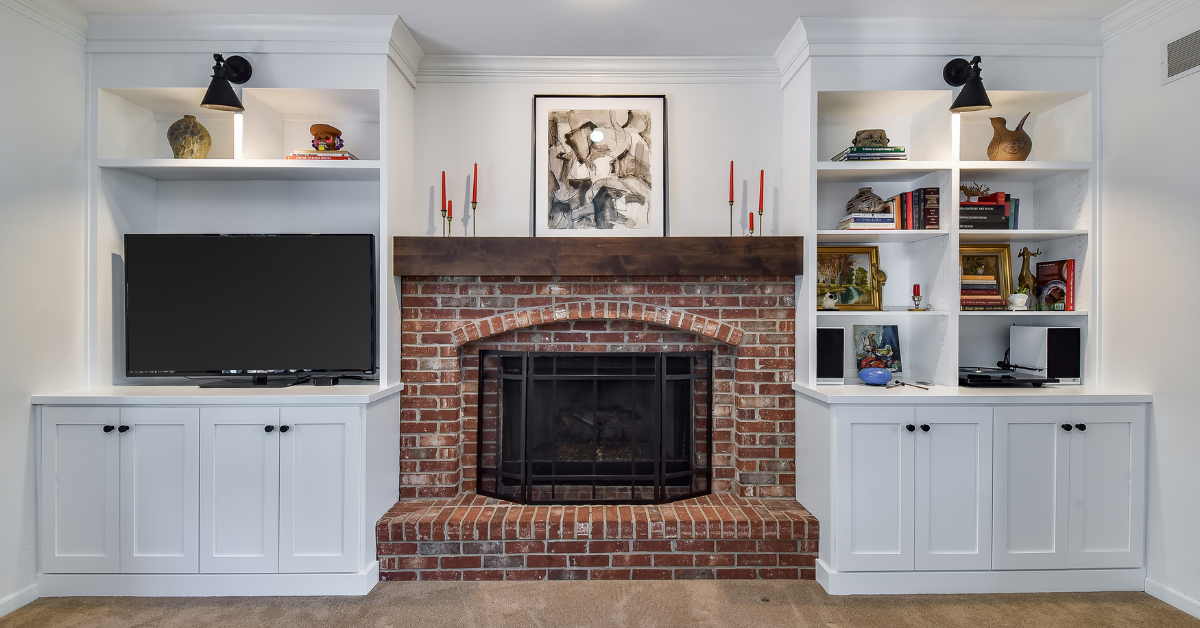
Sebring Design Build
Is your basement always freezing? Are you looking for some new ways to heat up your home so that you can enjoy your basement as an additional space to get cozy? There are plenty of basement heating options at your disposal, and a few expert tips for keeping your underground room warm all year long.
If you’re struggling to stay warm in your basement, you can certainly benefit from some expert basement heating options. From insulation to fireplace additions, there are several options at your disposal to help keep your basement as cozy as the rest of your home. Explore your options below to find out how to best provide a well-insulated system for your underground room.

What’s the Most Efficient Way to Heat a House?
There are several efficient ways to heat a house, and you can have a little bit of flexibility with your options depending on the needs of your home. In general, the most efficient way to heat a home involves some energy-saving practices.
Many homeowners will support the idea that the best way to heat a house is with solar heating, which uses complete renewable energy to provide heating through every room. If you have solar panels or solar roofing installed in your home, you may be able to attest to the efficiency of this heating method.
Other efficient ways of heating the home include geothermal heating, wood heating, and natural gas heating. There are several different heating options to explore, and if you have the freedom to construct or replace a heating system, it may be worth trying out some alternative opportunities. All these methods can be considered as basement heating options.
Basement Heating Options – Properly Heat a Basement
While you may want to seek expert recommendations based on the parameters of your specific room, there are a few general guidelines you can follow that will guarantee to add some heat to your basement. A rundown of the basic basement heating options you can look for will help you understand just how many choices are at your disposal.
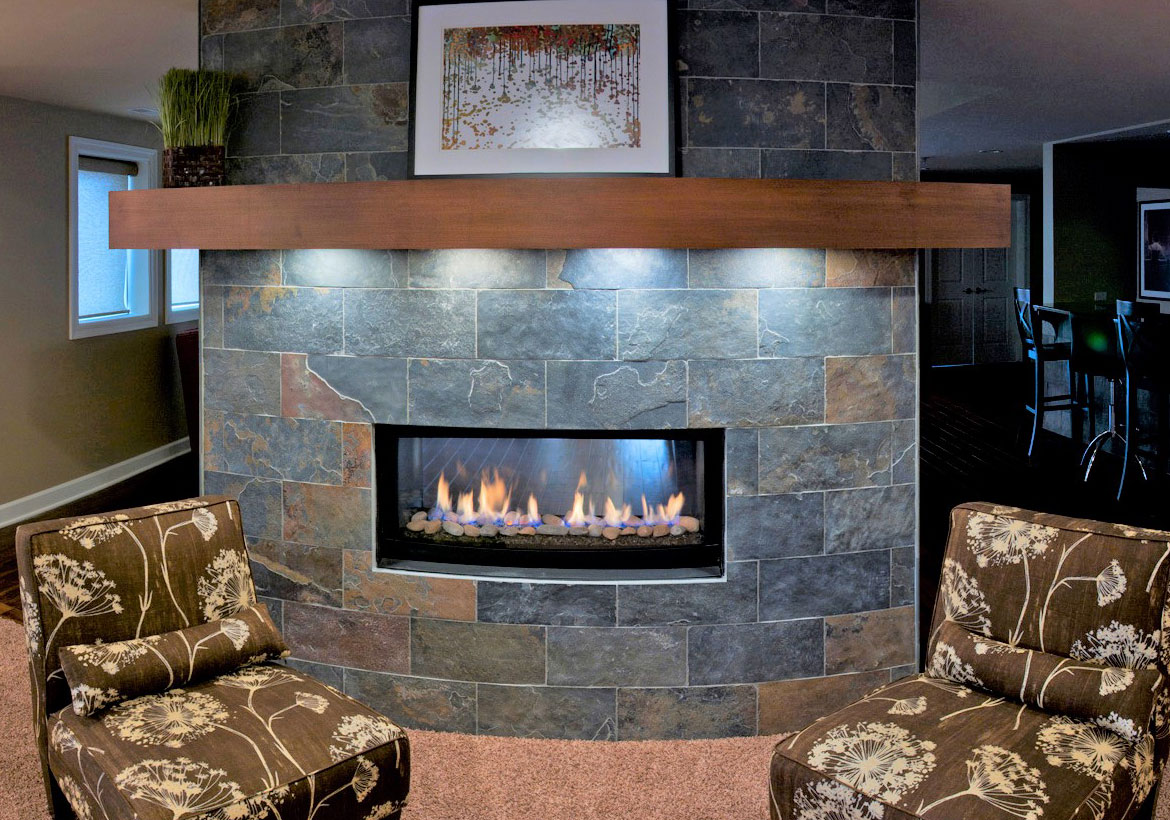
Basement Fireplaces
Basement fireplaces can be beautiful and cozy additions to your finished basement look. They are fairly easy to install, and can heat the entire room using traditional methods. If you’re able to, you can install a masonry fireplace in the comfort of your basement, giving you have enough space. However, if you want to save some time, money, and installation convenience, you can install a prefabricated fireplace. You even have plenty of infrared options to consider, as infrared fireplaces act more like space heaters than traditional fireplaces. They are very easy to use, and can add a touch of aesthetic appeal to your basement.
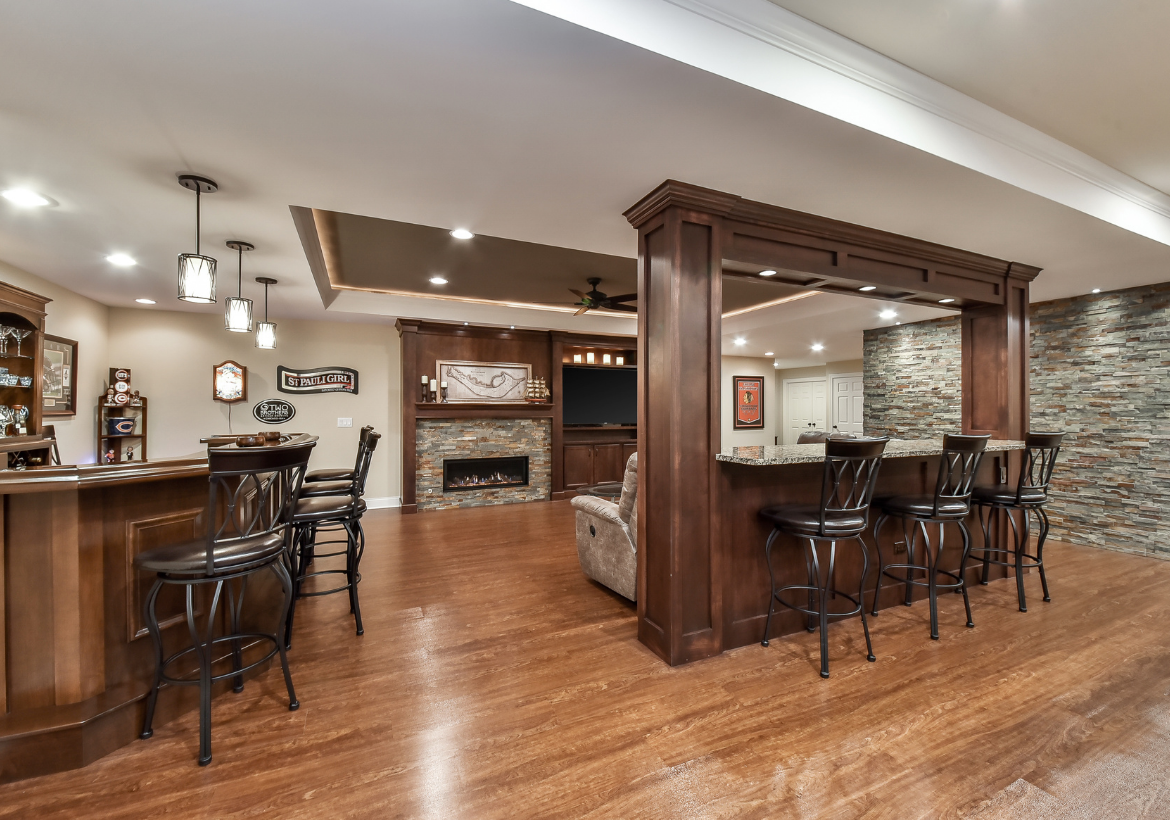
Basement Wall and Ceiling Options
There are plenty of ways to heat the walls and ceiling of your basement. Some methods of heating may work better if your basement is unfinished, while others are perfect for a fully finished and renovated basement room. It’s important to have a working heating run and cold air return if you are going to install a ventilated heating system. Installing your cool air return on the ceiling will guarantee good air returns to keep the basement properly heated. You can also add insulation in the walls of the basement to keep it nice and warm.
Radiant Heating
Same concept as radiant floor heat can be applied to the walls of your basement as well. If you have an unfinished wall, you can install electric-based heating panels within them. They heat up fast and will spread heat to the entirety of the room at your control.
Insulation
The best kind of insulation for a basement wall depends on how cold your surrounding environment is. You’ll likely want to seek interior wall insulation options, as they are better at waterproofing your walls. XPS, EPS, or mineral wool insulation materials are typically the most popular options, as they do not absorb water and they are extremely cost-effective. You can heat your basement ceiling using a variety of insulation options. While insulation is definitely manageable on the ceiling, most homeowners prefer to insulate the walls instead.
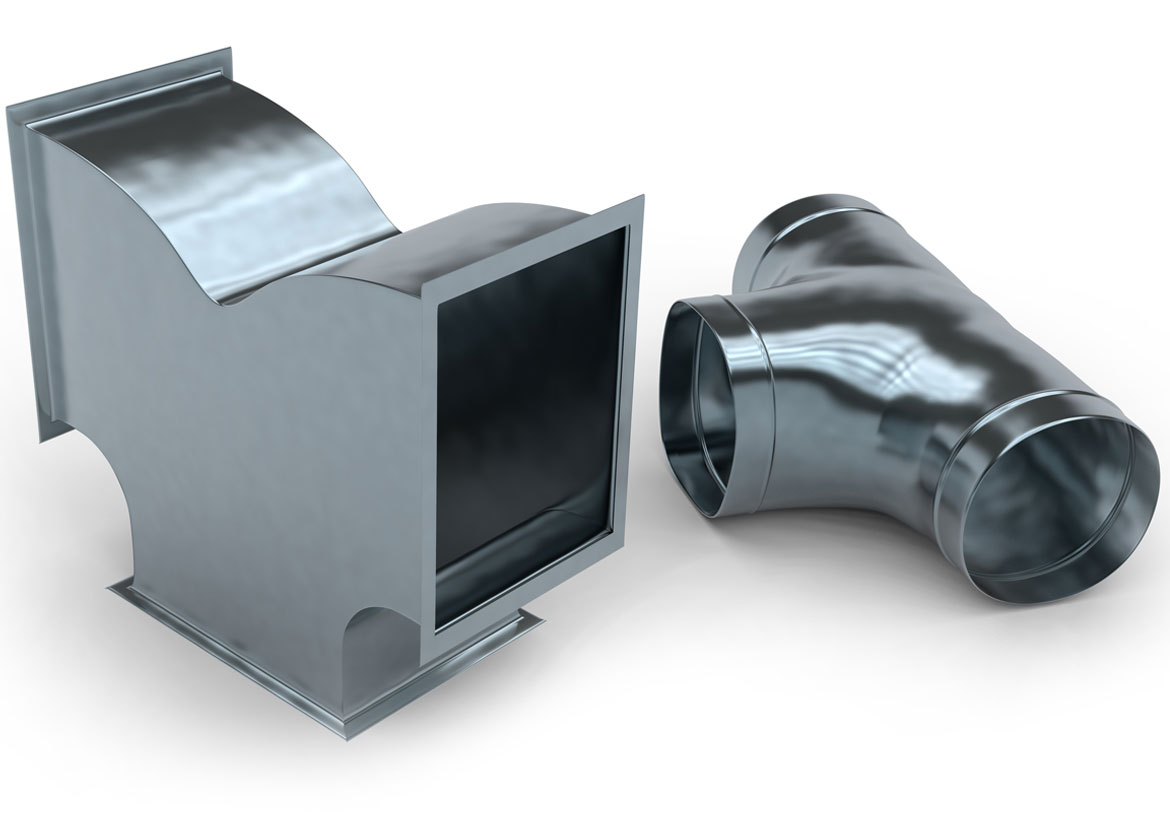
How to Duct a Basement
You can, however, invest in basement ducting options that will bring great amounts of heat to your room by connecting to the existing heating and air systems in your home. While it may require a little bit of installation and understanding of your air ducts, you can easily achieve this well-rounded heating option. Part of the ducts work through the ceilings, so it’s recommended that you learn how to best utilize the existing ceilings in your basement.
Adding HVAC vents to a basement is a money and energy-efficient option for providing all-around heating. Many residents go with this choice when looking for heating options for their homes. This is one of the best ways to keep your underground rooms warm, with proper air circulation and ensuring that the entire room is equally heated; giving you more control over the flow of air throughout the entire basement. However, it does require some understanding of how the ventilation systems in your house functions.
When installing new HVAC vents in your basement, you may be wondering if you should be worrying about air conditioning and heating, or just heating. In most areas of the world that have basements in the homes, only a heating system is needed – but it’s important to keep both options in mind in case adjustments need to be made.
The most important thing to know, however, is that heating runs are installed near the floor, while the cool air returns are installed in the ceiling. This is the best way to hook up the ventilation system with the rest of your home, while also ensuring that you will get a good amount of heat to your basement. You should also get a feel for what temperature is right for your basement. Having a good understanding of the proper temperatures can help you determine what amount of heat or air feels good in the space you have.
Remember that different basements and styles require different heating runs. You can tap into the existing ducts for your basement by making sure there is plenty of room for your cold air returns, and that your main heating duct connects to the furnace.
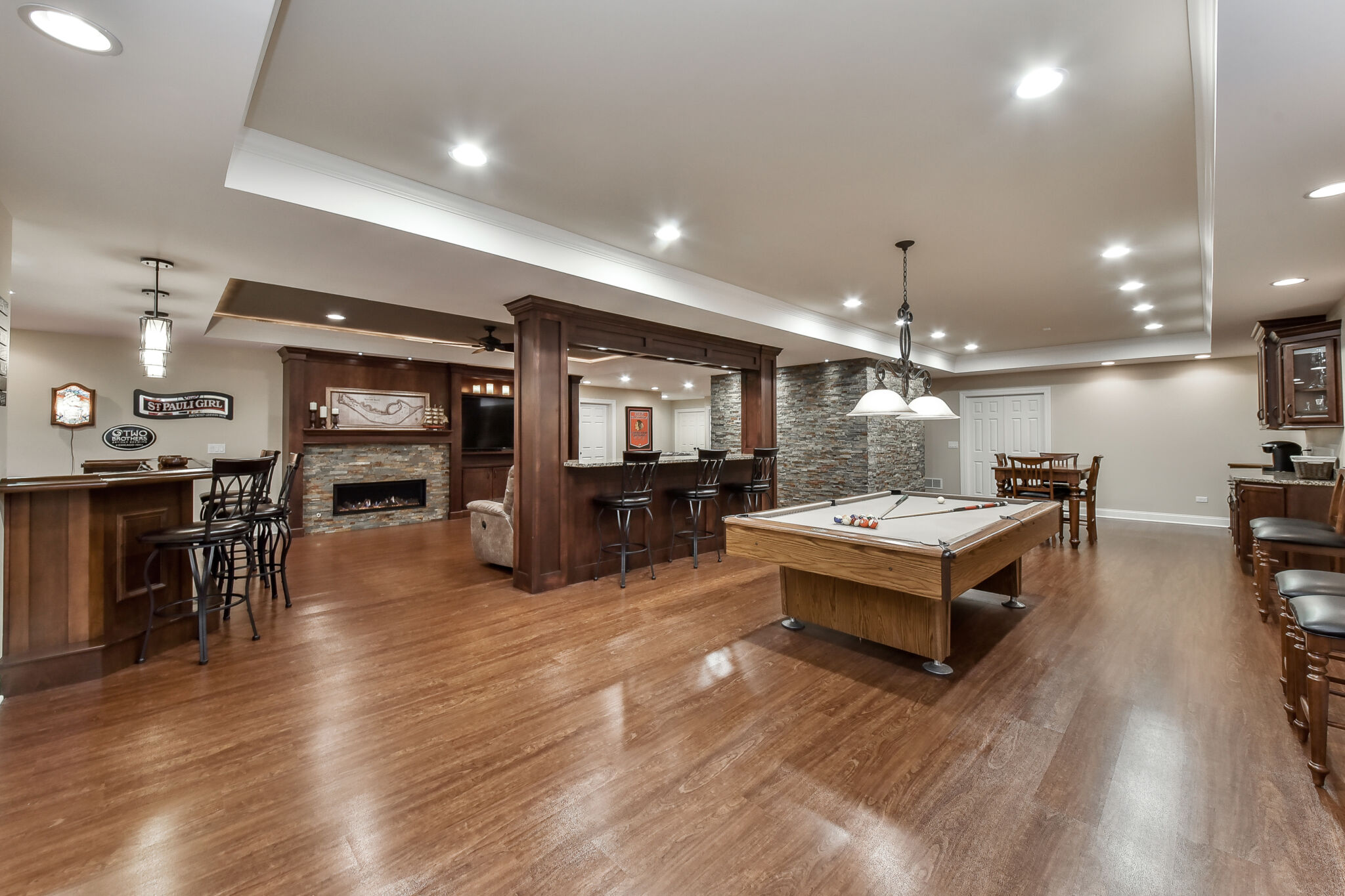
Basement Floor Heating Options
There are a few main heated basement floor options at your disposal. Your choice depends on the current state of your basement’s flooring, and whether or not you are willing to install a new system. Whether you choose to apply insulation or install a floor heater, there are a few ways you can get the ground warm enough so that your feet don’t freeze when you walk around. You can always invest in a basement fireplace to add some coziness to the space as well.

Radiant Floor Heating
If you are willing to temporarily uproot your carpet, or if you haven’t yet installed flooring, you may want to consider a floor heating system. There are several radiant heating panel options for you to try out. One popular heating system, known as hydronic radiant floor heating, is a water-based system that uses hot water to heat the floor from underneath. Another, called electric radiant floor heating, uses an energy-based heating system that you can install underneath your wood, carpet, tile, or stone flooring. There are some professional electrical hookups required, otherwise, the rest of the project can be completed on your own.
How Does Hydronic and Electric Radiant Floor Heating Work?
Radiant floor heating takes place with ease if you have the right equipment available. On one side, a PEX tube is used to connect with the hot water heater tube to the floor. Since the floor is sealed from all the sides, the warm water flows through the pipe and heats up the surface. If the water heater is not running, the temperature gradually loses almost 10-degrees at frequent intervals. There’s not much joints present on the tube and this is why it remains sealed. The tubes come with uncut lengths that can easily pass through the room. The material allows holding heat for a long time and it keeps the surface warm.
On the other hand, electric radiant floor heating works with a similar concept. However, the major difference is in place of the PEX tube, an electric heating-coil is stretched onto the entire floor. The other side of the tube is connected to the electric radiant heater. The tube heats up the surface of the floor through radiation. This is why, the floor heating stays warmer than Hydronic heating.
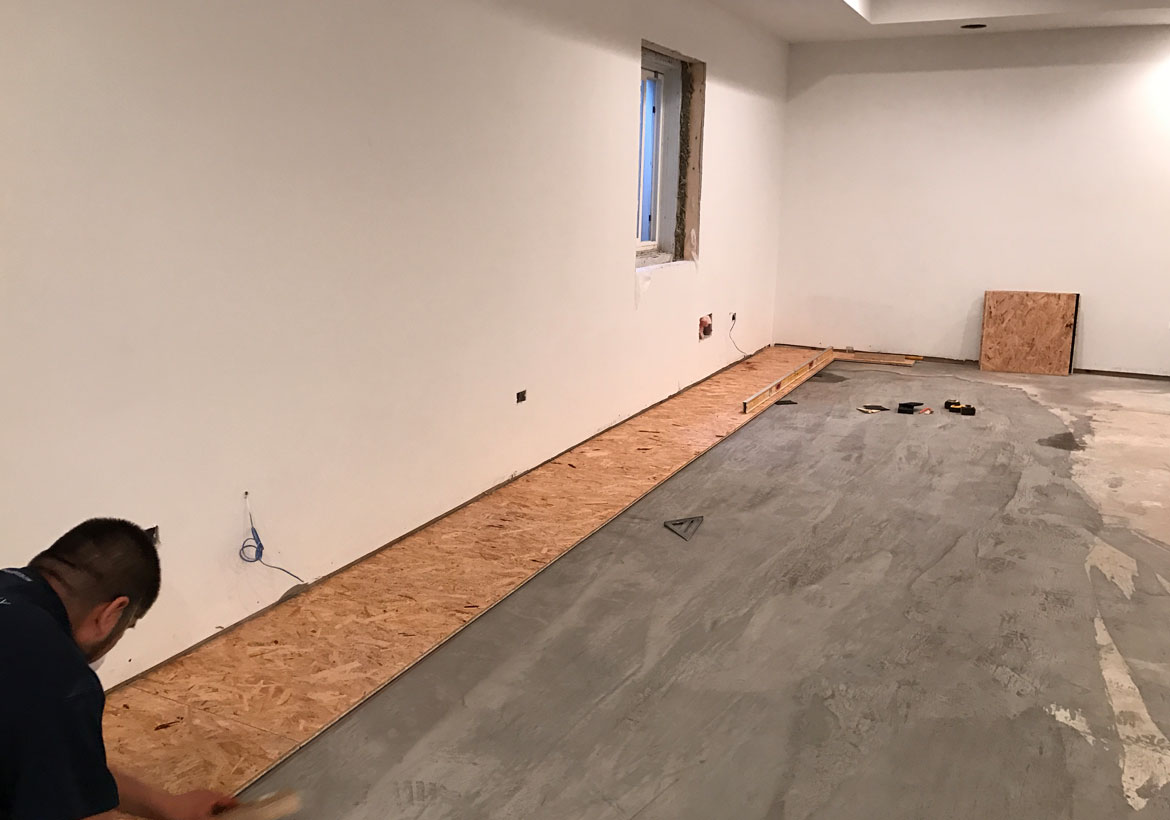
Floor Insulation
You can find some affordable and easy-to-install insulation options for heating your basement floor. The two recommended types of insulation to use for your floor include rigid foam and DRIcore insulation.
Rigid Foam Insulation
Rigid foam insulation works best on basement floors that have no water issues. If you suffer from any kind of leakage, you will want to get that problem taken care of before you install more insulation. If you have concrete flooring, make sure it is properly sealed before you begin installing your insulation.
The installation of rigid foam insulation requires a raised floor. You can achieve this by using 2 x 4’s across the floor, making sure to connect them to the walls. These are known as the “sleepers”, which are the foundations that will hold your insulation.
Next, you can install your rigid foam insulation between the sleepers. Cover it all up with plywood when you are finished, then plaster your walls and cover your floors with carpet or the flooring of your choice.
 Dri-Core Insulation
Dri-Core Insulation
Dri-core, also known as DRIcore, is a type of subfloor that is designed specifically for basements. It is a great way to insulate your completely finished floors, while also keeping them dry and free of damaging moisture leaks.
You can purchase DRIcore in square panels, which are easily installed under your finished floor. They come with different finishing options to match the style and function of your basement, making it move-in ready as quickly as possible. It allows the concrete to breathe, giving it enough space to insulate your room without becoming wet or humid.

Final Verdict: The Best Way to Heat a Basement
There are many basement heating options to choose from. What you choose will largely depend on the style of basement you have, its size, and its heating needs. In the cold winter nights, your basement can really take a hit in terms of temperature. You can combat this cold by installing approved basement insulation, using a floor heating option, or even ducting your basement. Connecting with your HVAC system can be advantageous, and is often well worth the money spent on the connection.
From floor heaters to fireplaces, there are additional accessories to be installed as well. Whether your basement is still a work in progress or it is fully finished, you have a wide range of basement heating options at your disposal to provide plenty of heating throughout the room.










